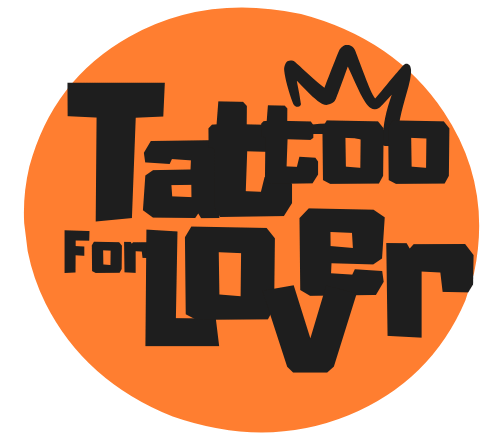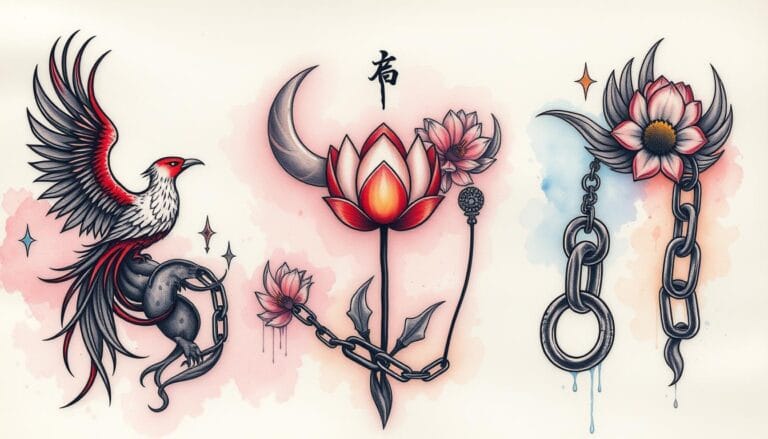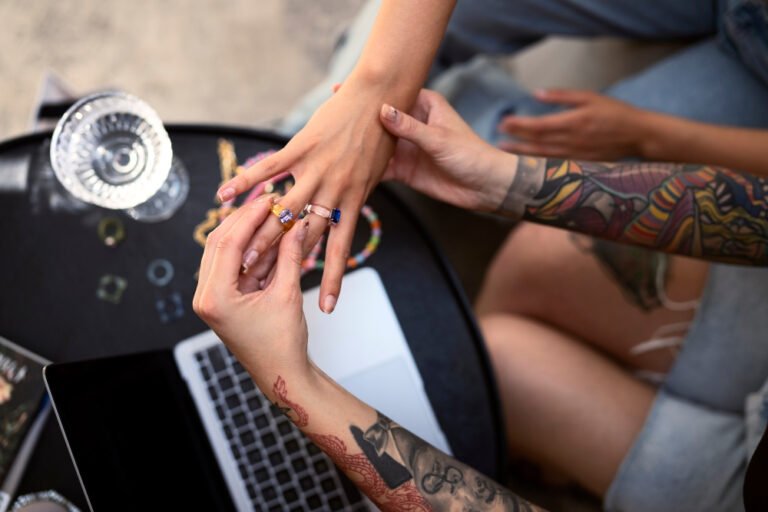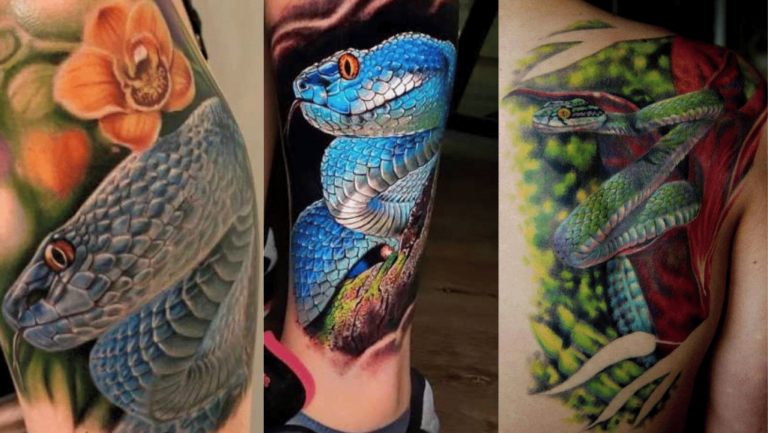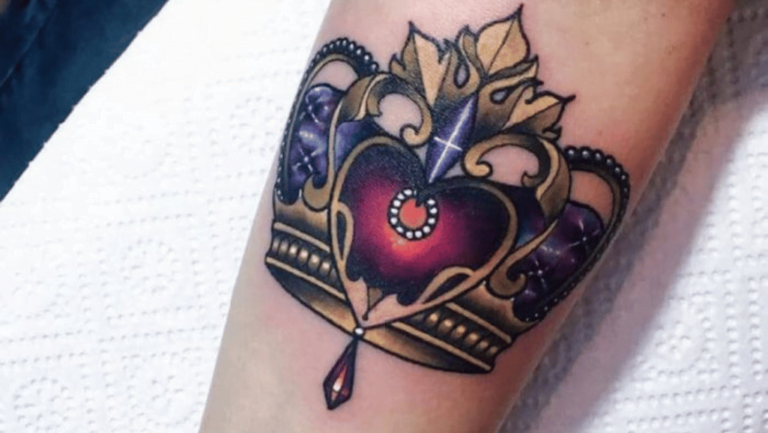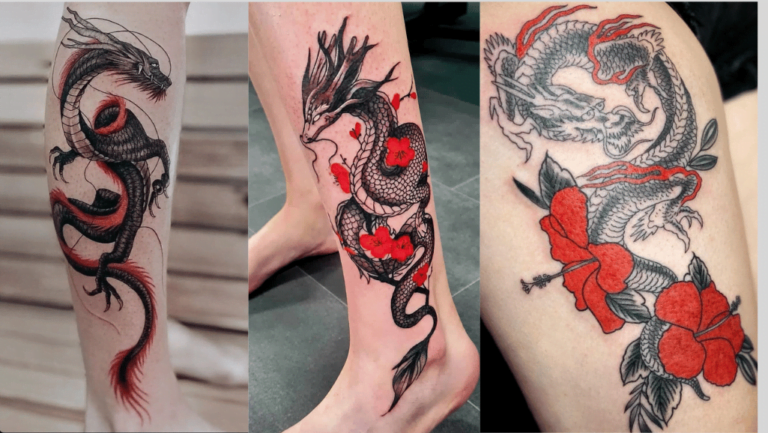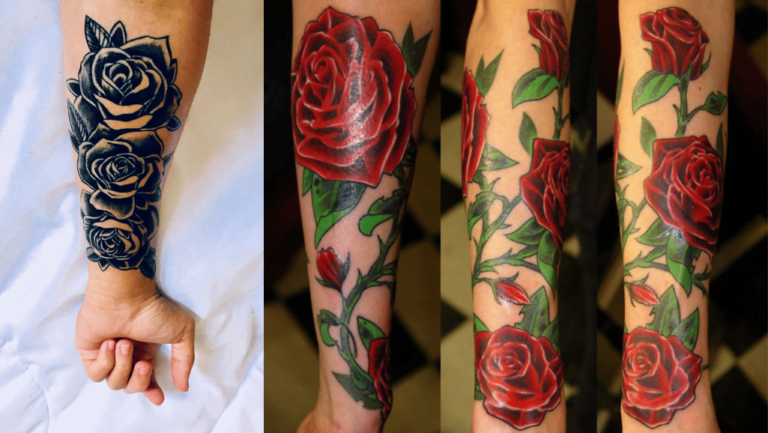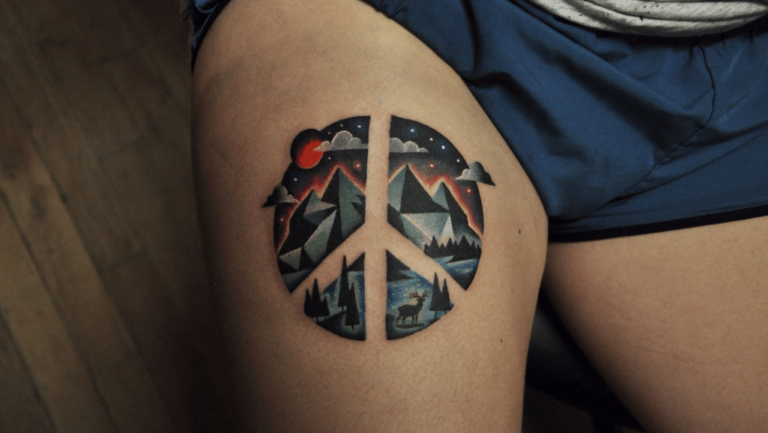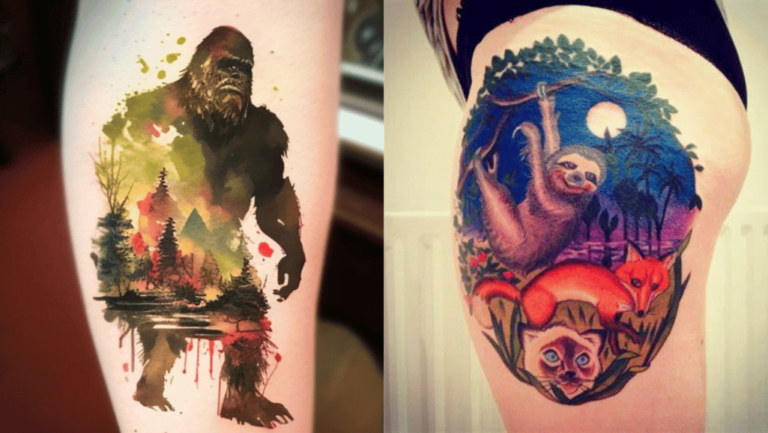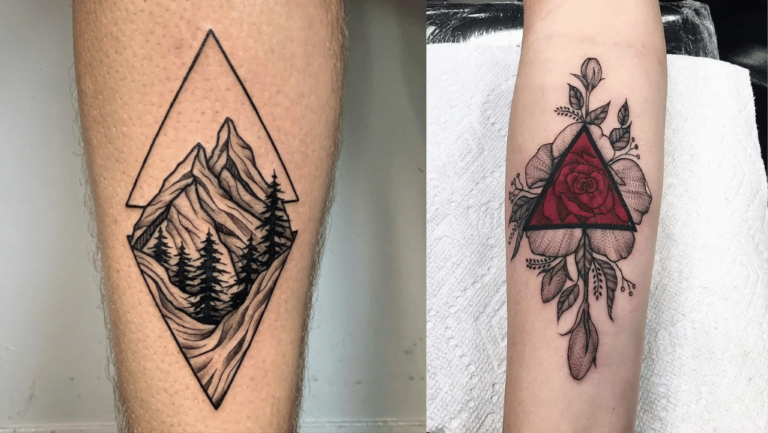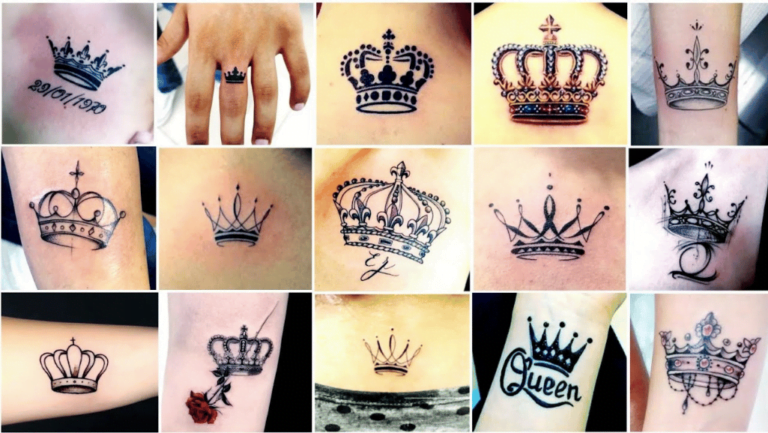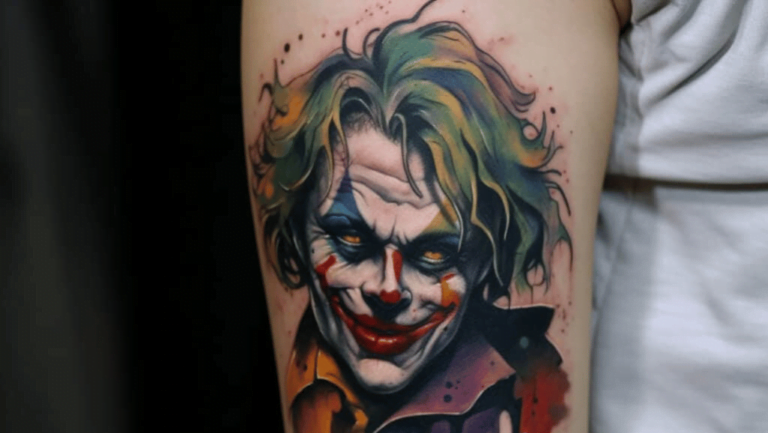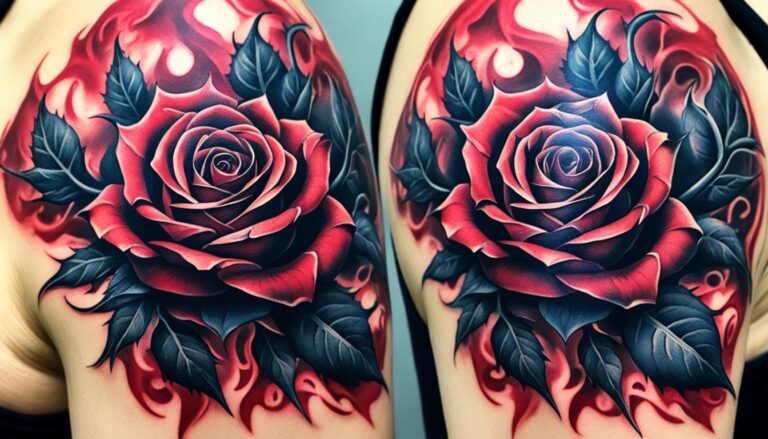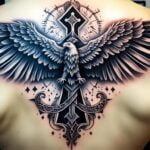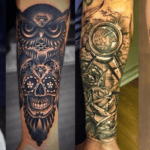A tattoo blowout occurs when the tattoo artist tattoos too deeply into the skin, causing the ink to spread in the fat layer below the dermis. This can result in blurred or less defined tattoo lines, giving the tattoo a blown-out appearance. Poor tattooing technique and improper aftercare can contribute to blowouts. It is important to identify the signs of a blowout, such as ink spread beyond the outline of the tattoo, blurred colors, compromised tattoo shape, and the appearance of a dark bruise-like circle around the tattooed area. While there is no health risk associated with blowouts, they can significantly impact the aesthetic of the tattoo.
Key Takeaways:
- What Is a Tattoo Blowout occurs when the ink spreads in the fat layer below the dermis, causing blurred or less defined tattoo lines.
- Blowouts can result from poor tattooing technique and improper aftercare.
- Signs of a blowout include ink spread beyond the tattoo outline, blurred colors, compromised tattoo shape, and a dark circle around the tattooed area.
- While blowouts do not pose a health risk, they can impact the aesthetic of the tattoo.
- Prevention and management of blowouts involve choosing an experienced tattoo artist and following proper aftercare instructions.
What Causes Tattoo Blowouts?
A tattoo blowout occurs when the artist tattoos too deeply into the skin, causing the ink to spread in the fat layer below the dermis. This can result in blurred or less defined tattoo lines, giving the tattoo a blown-out appearance.
The most common cause of a tattoo blowout is poor tattooing technique. When an artist applies too much pressure or tattoos too quickly, it increases the risk of the ink spreading beyond the intended area. This can lead to a blowout, especially when working on delicate or thin-skinned areas.
Improper aftercare also plays a significant role in the development of tattoo blowouts. Failing to follow the recommended aftercare routine, such as neglecting to keep the tattooed area clean and moisturized, can result in complications during the healing process. This can cause the ink to spread and contribute to the blowout.
Choosing an experienced tattoo artist and following proper aftercare instructions are crucial to minimize the risk of a blowout.
By selecting a skilled tattoo artist who maintains precision in their techniques, the chances of a blowout can be significantly reduced. Additionally, adhering to the proper aftercare guidelines will support the healing process and help preserve the clarity and integrity of the tattoo.
Common Causes of Tattoo Blowouts:
- Poor tattooing technique
- Excessive pressure during the tattooing process
- Tattooing too deeply into the skin
- Rapid tattooing movements
- Thin or delicate skin areas
- Using low-quality or expired tattoo ink
- Improper aftercare practices
It is crucial to be aware of the potential causes of tattoo blowouts to make informed decisions during the tattooing process. Working with a reputable tattoo artist who prioritizes technique and following the recommended aftercare routine can help minimize the risk of experiencing a blowout.
| Cause | Description |
|---|---|
| Poor tattooing technique | When the artist applies too much pressure, tattoos too quickly, or lacks precision |
| Excessive pressure | Too much force exerted during the tattooing process |
| Tattooing too deeply | Tattoo needles penetrating beyond the desired depth into the skin |
| Rapid tattooing movements | Tattooing at a fast pace without giving the ink time to settle |
| Thin or delicate skin areas | Areas where the skin is more fragile and prone to damage |
| Low-quality ink | Using ink that is not properly formulated for tattooing |
| Improper aftercare | Not following the recommended care routine during the healing process |
Signs of a Blown-Out Tattoo
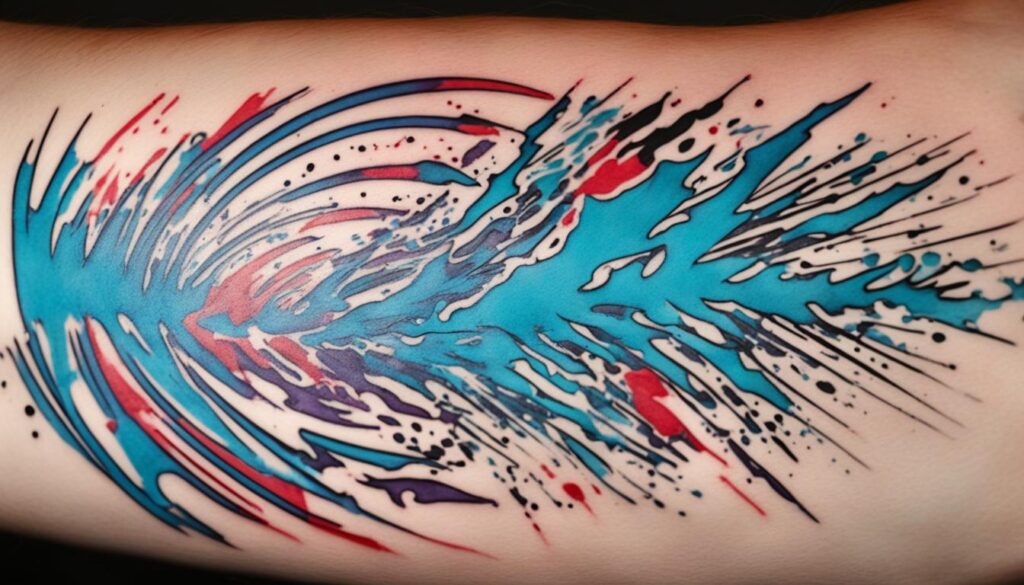
When getting a tattoo, it is important to be able to recognize the signs of a blown-out tattoo, as early identification can make a significant difference in its treatment and outcome.
Blowouts occur when the tattoo artist tattoos too deeply into the skin, causing the ink to spread beyond the intended tattoo outline and giving the tattoo a distorted appearance. There are several signs that indicate a tattoo may have experienced a blowout:
- Ink spreading beyond the tattoo outline: One of the most noticeable signs of a blowout is when the ink spreads beyond the tattoo’s intended boundaries. This can result in blurred or undefined lines, compromising the tattoo’s overall shape and detail.
- Blurred colors: A blowout can also cause the colors of the tattoo to appear blurred or smudged. This can be particularly evident in areas where different colors overlap.
- Compromised tattoo shape: A blown-out tattoo may have a distorted shape or lose its crispness. The once-defined edges may appear fuzzy or uneven, detracting from the tattoo’s overall design.
- Dark circle around the tattooed area: Another sign of a blowout is the appearance of a dark circle surrounding the tattooed area. This bruise-like discoloration is a result of the ink spreading in the deeper layers of the skin.
It is important to note that the severity of a blowout can vary, and not all blowouts may be immediately noticeable. That’s why it is crucial to closely monitor the tattoo during the initial healing stages and throughout the entire healing process.
By regularly inspecting the tattoo during the first 24 to 48 hours after getting inked, you can catch any signs of a blowout early on. Paying attention to these signs can help you take appropriate action and seek professional advice to rectify the situation.
Understanding the signs of a blown-out tattoo is crucial for tattoo enthusiasts and professionals alike. It allows for prompt recognition and appropriate steps towards treating the blowout, whether through corrective measures or seeking professional assistance.
How to Treat a Blown-Out Tattoo
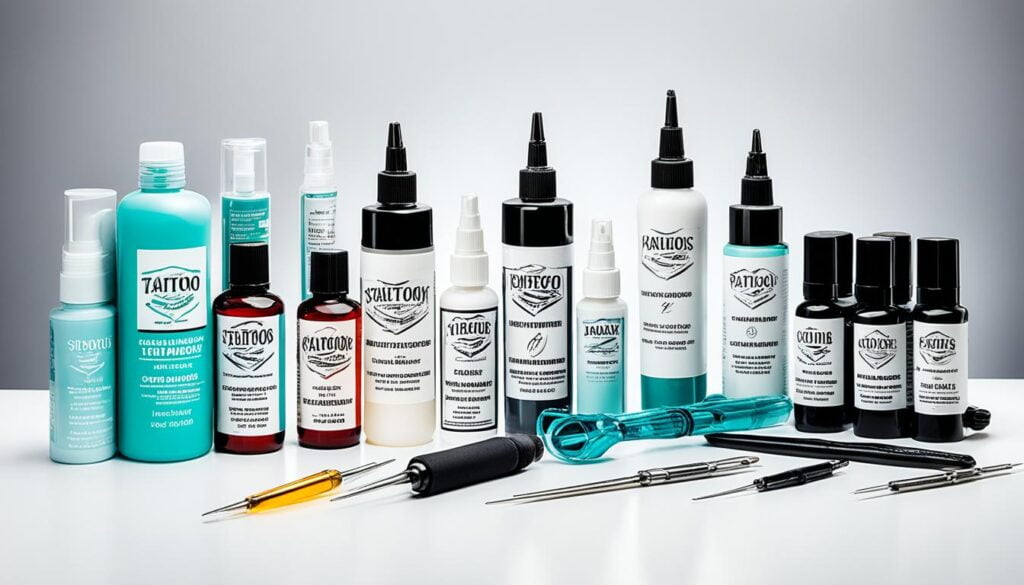
If a blowout occurs, there are several treatment options to consider. Treatment options for blowouts include additional tattooing, surgical tattoo removal, and laser tattoo removal.
If you want to mask the blown-out area, additional tattooing can be done. However, it’s important to wait for the original tattoo to fully heal before proceeding with a cover-up. Additional tattooing can help blend the blown-out area with the rest of the tattoo, resulting in a more visually cohesive design.
For those who want to completely remove the blown-out tattoo, there are two primary options: surgical tattoo removal and laser tattoo removal.
Surgical tattoo removal is a more invasive procedure where the tattooed skin is surgically excised, or cut out, and the remaining skin is then stitched back together. This option is typically recommended for larger blown-out tattoos that cannot be effectively treated through other methods. It’s important to note that surgical tattoo removal may leave behind a scar, and the healing process can take several weeks.
Laser tattoo removal is a non-invasive procedure that utilizes lasers to break down the ink particles in the skin. The broken-down ink is then naturally eliminated by the body’s immune system. This option is considered less invasive and usually results in less scarring compared to surgical tattoo removal. However, multiple sessions may be required, and it can take several months to achieve the desired results.
Before deciding on a treatment option, it is important to consult with a professional to determine the most suitable approach based on your specific circumstances and goals. They can assess the severity of the blowout, the size and location of the tattoo, and your overall skin health to provide personalized recommendations.
Comparison of Treatment Options for Blowouts
| Treatment Option | Description | Pros | Cons |
|---|---|---|---|
| Additional Tattooing | Utilizing more ink to cover up the blown-out area | – Can effectively blend the blown-out area with the rest of the tattoo – Less invasive compared to removal options | – Requires waiting for the original tattoo to fully heal – Doesn’t remove the blown-out ink, only masks it |
| Surgical Tattoo Removal | Surgically removing the tattooed skin and stitching the remaining skin back together | – Can completely remove the blown-out tattoo – Suitable option for larger blown-out tattoos | – Potentially leaves behind a scar – Longer healing process |
| Laser Tattoo Removal | Using lasers to break down the ink particles for natural elimination | – Non-invasive procedure – Usually results in less scarring compared to surgical removal | – Multiple sessions may be required – Can take several months to achieve desired results |
Each treatment option has its own considerations and risks, so it’s important to discuss your preferences and expectations with a qualified professional. They will guide you through the process and help you make an informed decision to achieve the best possible outcome.
Conclusion
Tattoo blowouts can be frustrating, but there are steps that can be taken to prevent and manage them. By choosing an experienced tattoo artist, properly caring for the tattooed area during the healing process, and following aftercare instructions, individuals can significantly minimize the risk of blowouts. Prevention is key in maintaining the integrity of the tattoo and avoiding the dreaded blown-out appearance.
If, despite precautions, a blowout does occur, there are treatment options available. Additional tattooing can be done to cover up the blowout, provided that the original tattoo has fully healed. For those seeking a more involved approach, surgical tattoo removal involves the removal of tattooed skin and stitching the remaining skin back together. Alternatively, laser tattoo removal can break down the ink particles using lasers, allowing the body to naturally eliminate them.
It is crucial to consult with a professional to determine the most suitable treatment for a blowout. Each option has its own considerations and risks, and an expert can provide personalized guidance. By taking the necessary precautions and seeking appropriate treatment, individuals can ensure that their tattoos maintain their desired aesthetic for years to come.
FAQ
What is a tattoo blowout?
What are the symptoms of a tattoo blowout?
What causes a tattoo blowout?
How can a tattoo blowout be prevented?
What are the treatment options for a blown-out tattoo?
Are there any risks associated with treating a blowout tattoo?
Can a blowout tattoo be fixed?
Are there any health risks associated with a blowout tattoo?
How long does it take to heal a blowout tattoo?
Can blowouts happen with any type of tattoo?
Forhad
Forhad's writing is not just about the artistry of tattoos or the latest trends in the industry; it's an exploration of the deep-rooted connections people have with their tattoos, reflecting personal narratives, cultural histories, and moments of transformation. Through a mix of in-depth features, personal narratives, and insightful analyses, he sheds light on the multifaceted nature of tattooing, revealing the emotional and cultural layers that lie beneath the surface.

